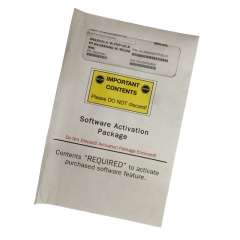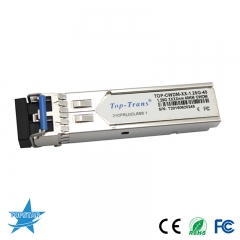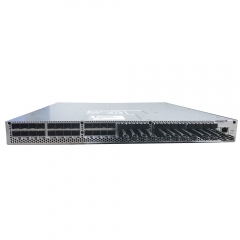#400G #200G #DataCenter #5G #Opticalmodule
200G vs 400G Ethernet: Who Is the Winner in Data Center?
With the rise of high data rate applications such as 5G and cloud computing, 200G and 400G Ethernet are getting much attention in data centers. How to choose between the two becomes a hot topic. Let's unveil the mystery of the two in aspects of the technologies, server changes, optical transceiver uses and network upgrades.
200G vs 400G Ethernet: Standardization
During the evolution of the IEEE protocol standard, the 200G standard was issued later than the 400G standard. The 400G standard was first proposed in 2013 by IEEE 802.3 Working Group and was approved in 2017 with IEEE 802.3bs 400G Ethernet standard. While the 200G standard was proposed and approved in 2015 and 2018 respectively. And the 200G single-mode specification is generally based on the 400G single-mode specification but halved the 400G one. With the fast upgrades of 400G technology and its products due to market needs, the 400G standard is more comprehensive and mature than that of 200G.
How to Connect Servers in Data Centers? 200G Or 400G Ethernet?
Network switch speed is always driven by server uplink speed. No matter in the past or at present, one-to-four structure is often used to connect switches and servers to increase the port density of switches. And this structure is likely to be adopted in the future as well. Then, how to choose between the 200G Ethernet and 400G Ethernet mainly depends on the server we use.
How to Connect Servers in Data Centers.
According to Crehan research and forecast, the momentum of 100G servers will surpass that of 50G servers in 2020. That means, most network operators are likely to use 100G server connection rather than 50G. And 100G servers may become the mainstream according to the trends during 2020-2023. In other words, one could skip 200G and choose 400G directly with 100G server deployed.
50G vs 100G Server Adoption Rates.
Optical Transceiver Market Drives 400G Ethernet
There are two main factors that push 400G Ethernet more popular than 200G Ethernet in the optical transceiver market. One is the module supply, another is the cost.
400G Optical Transceivers Gain More Market Supplies and Acceptance
Normally, the early adoption of 400G is to support the rise of 200G long-haul for aggressive DCI network builds. It makes 400G possible in metro networks and supports 3x the distance for 200G wavelengths. WIth further development, 400G transceivers are more favorable among manufacturers. Many suppliers pay more attention to 400G rather than 200G. For example, Senko’s new CS connector is specifically designed for 400G data center optimization. Actually, all things have reasons. Even if the total cost of 200G transceiver and 400G transceiver is the same, the cost and power consumption per bit of 400G transceiver is half of the 200G’s because of the doubled bandwidth of 400G. More importantly, the total revenue data among 100G, 200G and 400G shows that 400G is far beyond than 200G in the whole market.
Total Revenue for 100G 200G and 400G Transceivers.
According to shipment data of the top 8 suppliers gathered by Omdia, the 400G transceiver market is more prosperous than that of 200G. There are more options for users in 400G deployment. Although the top 8 suppliers all provide 200G and 400G transceivers, 200G transceivers only offer 100m SR4 and 2km FR4 while 400G transceivers could offer more options like SR8, SR4.2, DR4, FR4 and ZR. In addition, 400G products and solutions are more matured and perfect than 200G because of its earlier release.
400G Optical Modules Support More Applications With Fewer Cost
Compared to 200G transceivers, 400G transceivers could support more applications including DCI and 200G applications. And they can double the traffic carrying capacity between applications than 100G/200G solutions. With 400G solutions, fewer transponders will be needed, resulting in less transportation and operating costs. This will make the 400G market more lively in return.
400G Ethernet Is more Suitable for Future Network Upgrades
The 200G optical modules will include two main form factors, namely QSFP-DD and CFP2. The 400G optical transceivers will mainly include QSFP-DD and OSFP packages. Since the OSFP is expected to offer a better path to 800G and higher transmission rates, 400G transceiver is more suitable and convenient for future network migration.
400G Ethernet Gains a Complete Victory
From the current analysis and evidence above, 400G Ethernet is more competitive than 200G Ethernet in Ethernet standardization, 100G server connection, optical transceiver market and future netw
 +86 19860146913
+86 19860146913 dsale@topsfp.com
dsale@topsfp.com English
English русский
русский español
español العربية
العربية 中文
中文











